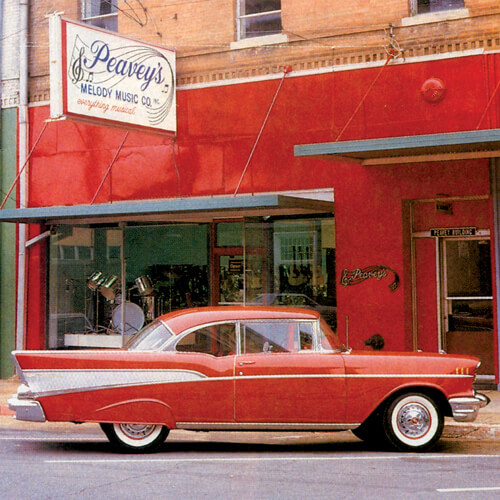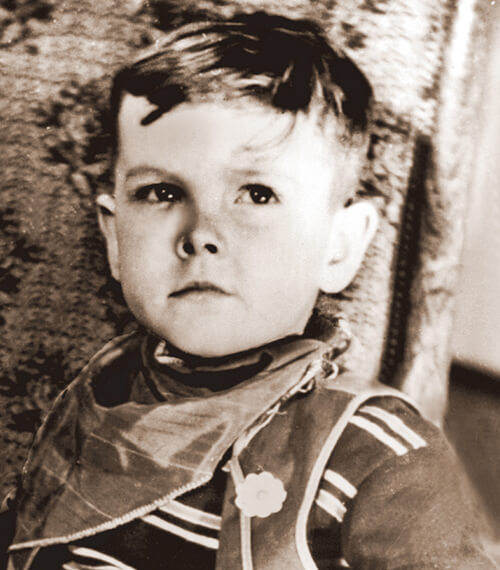Peavey Chapter One
Peavey: A Product of a Young Man’s Environment
Chapter 1
“Experience sometimes doesn’t teach you what to do, but teaches you what not to do.”

The story of Peavey Electronics starts as many founding stories do. It’s not with overnight success, but with a fair share of missteps and trial-and-error. Peavey begins with a family-run business and a young man’s vision to resolve common challenges that his guitar-playing contemporaries faced. As both a company and a persona, the Peavey name represents both passion for music and hard-earned business experience. This is a story about self-reliance balanced by self-awareness.
Although founder and CEO Hartley Peavey is of the belief that there is no “magic” behind the products he creates — just solid engineering — there is some magic to be found at the intersection of circumstance, talent, and vision that started this company.
Formative Years
Too often, a young person’s fundamental talents may only be realized if the environment of their upbringing is conducive to that discovery. Hartley Peavey had the good fortune of discovering his natural talents in the conducive environment of Meridian, Miss. His story begins with his family’s story. His father, J.B. “Mutt” Peavey, was a musician who couldn’t find a job in the Great Depression and spent four years playing saxophone in a swing band. He eventually returned to Mississippi to start a family and founded a music store in Meridian with $50 and a second-hand piano.

Born in 1941, Hartley entered the world with an opportunity to learn the music business from the inside-out through a retail environment. He also came of age in the mid-century Deep South where he witnessed the birth of American rock ’n roll. Both circumstances would prove critical to his future success.
The year 1955 was a pivotal year both in music and a young man’s life. Rock ’n roll was exploding as Elvis Presley, Carl Perkins, Fats Domino, and Little Richard ruled the airwaves. It was also around this time that Hartley discovered his natural propensity for building things. His technical talent began with fixing automatic record changers in record players that were brought into his father’s retail shop. In 1955, he also inherited his first set of hand tools from his grandfather, Joseph Lane Peavey, an entrepreneur and inventor with many patents to his name. With these tools, Hartley became the youngest person to enroll in Ross Collins Vocational School in Meridian.

He tried his hand at everything, including machine shop, basic and advanced electricity, wood shop, sheet metal shop, mechanical drawing, and a class known as “radio shop.” He also learned how to use lathes and milling machines. Although he wasn’t an academic standout with his grades, he did manage to win science fairs with excellent execution and proof of concept. Still, Hartley didn’t overthink his talent for building or let these early accolades get to his head. Like many teen musicians of his day, Hartley’s mind was set on rock ’n roll.
Curiosity and Talent Unite
In 1957, Hartley and his friends traveled south to see Bo Diddley in concert in Laurel, Miss. Hartley was mesmerized by Diddley’s amplifier that seemed to stretch across half the stage. He decided at that moment that he wanted to become a guitar player. It was an aspiration that wasn’t met with much enthusiasm back home. Although Hartley’s father hated rock ’n roll, he offered to buy his son an electric guitar if he would take lessons and learn how to play the instrument properly. Hartley was given a classical nylon string guitar to get started, but he was too impatient. He sat for only a few formal lessons before taking matters into his own hands.
In an attempt to make his own electric guitar, Hartley tried putting a pair of steel strings on his nylon string classical guitar. The bridge subsequently popped off, which became his introduction to guitar repair. Next, he found himself in need of a pickup, which at the time cost $39 he did not have. He decided to order magnets from a magazine and bought a roll of the smallest electrical wire he could find. Sitting at his mother’s kitchen table, he hand-wound his own magnetic pickup. It worked well despite its heavy weight.

Now in possession of a guitar and pickup, Hartley needed an amplifier. Again, he turned to the first set of tools he had inherited from his grandfather. His first attempt, built from a schematic, was not a success. The problem was that he didn’t understand what RIAA equalization was, so when he plugged in the guitar, it sounded like he was playing through a pillow. After identifying this problem and studying how to resolve it, he redid the circuitry to create his first workable amp.
Still, despite all of this talent and creativity, Hartley had his sights on becoming a guitar player first and foremost. In fact, he would try for eight years, but his playing was “robotic” as he described it. He would slow down the songs and methodically practice the parts, but he lacked a more natural, free-flowing musical ability. After getting kicked out of a third band, Hartley decided his future was not as a rockstar. However, he continued to hang out with his musician friends and have conversations about gear. He kept hearing everyone say, “I wish somebody would make good gear at a fair price.”
That feedback resonated with Hartley at a critical time when rock music was evolving. By the late 1950s, the pop music that had been in demand for the previous five years “devolved” somewhat into sweet songs with “syrupy lyrics,” i.e., Leslie Gore, Bobby Rydell, and Fabian. Consequently, seminal American rock ‘n roll was exported to the U.K. where it had a profound influence on young British musicians. Eventually, rock ‘n roll was repackaged and sold back to the U.S. through The Beatles, The Rolling Stones, and countless other bands.
At the same time, Hartley looked at himself in the mirror and asked a hard question: “If you’re not going to be a rockstar, what are you going to do?”

Geared Up for Revolution

Hartley is of the opinion that most people are born with a set of talents, and the trick in life is to find out what those talents are and to “go for it.” As he sees it, a lot of people are doing things that they want to do, but aren’t necessarily good at. Hartley resolved to use his passion for music and the talents he did have to build amplifiers.
“I tried to take the talent I was given and make the most of it,” he once described.
By the early 1960s, a British invasion was coming, and a young man from the small town of Meridian, Miss., was on the brink of creating the fairly priced, road-worthy gear that so many young musicians would seek. He would find himself at the forefront of a musical equipment revolution that would change the industry for good.
